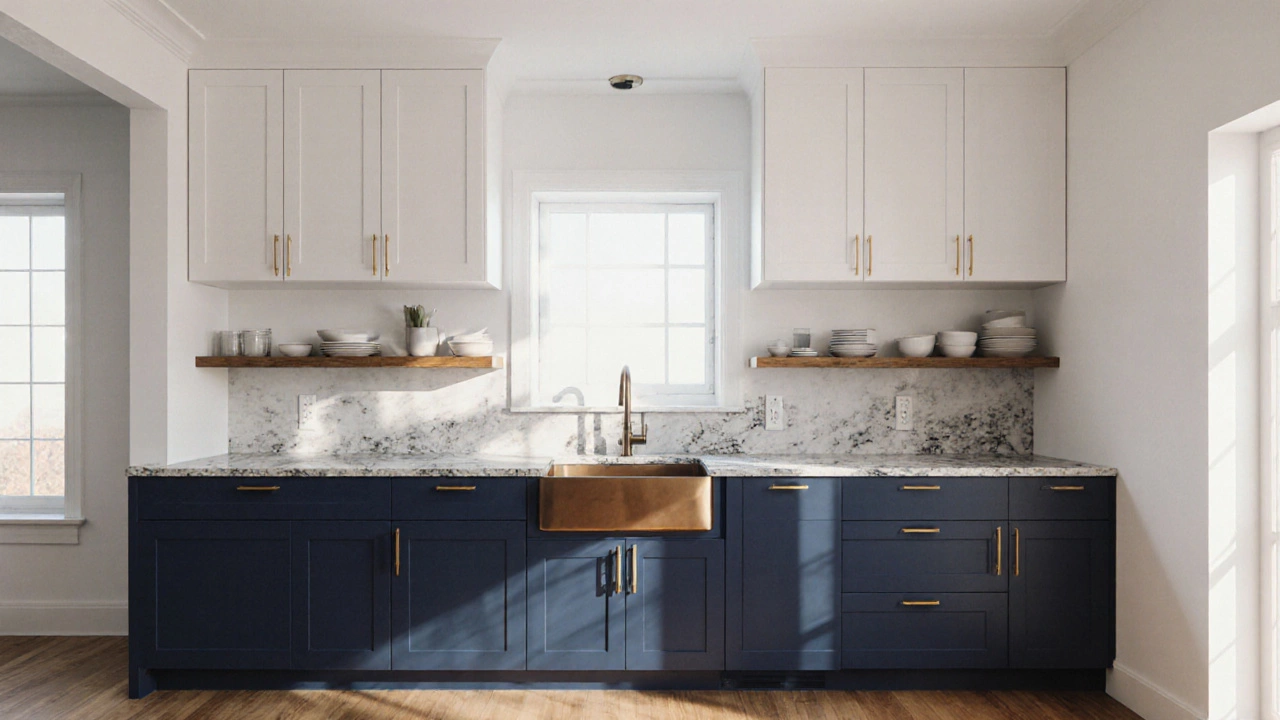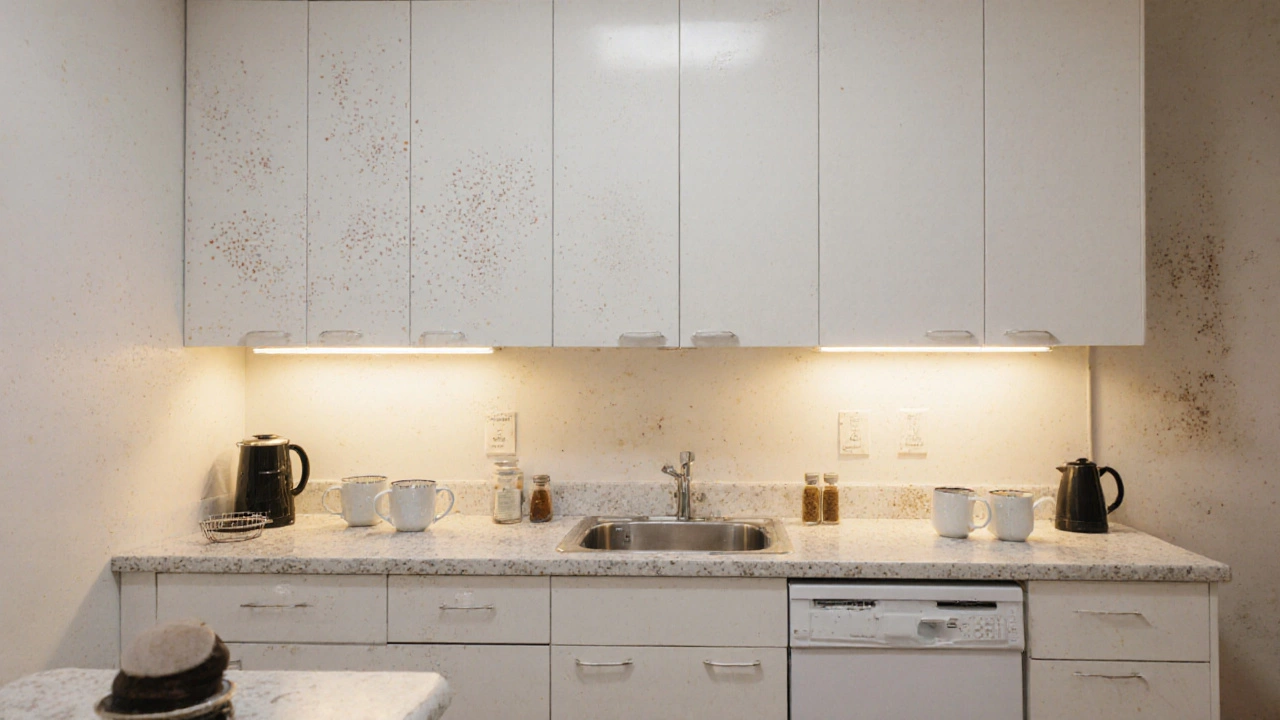Are white cabinets a fad? Real trends in kitchen and storage design

Kitchen Space & White Cabinet Calculator
How White Cabinets Will Work For Your Kitchen
Answer these questions to get personalized recommendations based on the latest kitchen design trends.
White cabinets have been everywhere for the last decade. Instagram feeds, home improvement shows, and magazine spreads all show the same thing: crisp white doors, clean lines, and bright kitchens. But now, people are asking: is this just a passing trend, or are white cabinets here to stay? The answer isn’t simple. White cabinets aren’t a fad-they’re a tool. And like any good tool, their value depends on how you use them.
Why white cabinets became so popular
White cabinets didn’t appear out of nowhere. They rose because they solved real problems. In small kitchens, white reflects light. It makes cramped spaces feel bigger. In homes with limited natural light, white cabinets act like a mirror, bouncing what little sun comes in back into the room. That’s not style-that’s physics.
They also matched the rise of minimalist design. When people started stripping away clutter-getting rid of ornate moldings, dark wood tones, and busy patterns-white became the neutral canvas. It didn’t compete. It didn’t distract. It just worked. Brands like IKEA and Pottery Barn pushed white cabinets hard because they were affordable, easy to mass-produce, and looked good in photos.
By 2018, white was the default. Homebuyers expected it. Real estate agents recommended it. And for good reason: homes with white cabinets sold faster and for higher prices, according to a 2020 National Association of Realtors survey. Buyers saw them as timeless. But that’s where things started to shift.
What’s changing now
People are tired of the same look. Not because white is ugly, but because too many homes started looking identical. You walk into a house, open the cabinets, and it feels like you’ve seen it before-twice. That’s not timeless. That’s repetitive.
Today, homeowners want personality. They want color, texture, contrast. Dark cabinets-navy, charcoal, even black-are making a comeback. But not as replacements. As partners. The new trend isn’t white OR dark. It’s white AND dark. Two-tone kitchens are now the norm. Upper cabinets in white, lowers in a deeper shade. Or a white island with stained wood base cabinets. This isn’t abandoning white. It’s evolving it.
Material choices are changing too. White cabinets made from laminate or thermofoil are falling out of favor. They scratch easily, look cheap under harsh lighting, and can’t be refinished. People are moving toward solid wood, painted MDF with high-gloss finishes, or even hand-painted options. These look richer, last longer, and hold their value better.
White cabinets still have clear advantages
Let’s be honest: white cabinets aren’t going away. They still dominate new construction. Why? Because they’re practical.
- They make small spaces feel larger-critical in urban apartments and starter homes.
- They pair with any countertop: quartz, marble, butcher block, concrete.
- They’re easier to update. Swap out hardware, change the backsplash, repaint the walls, and the whole room feels fresh.
- They hide dust better than dark finishes-yes, really. Light-colored surfaces don’t show smudges the same way.
They also work well with open shelving. If you’re using open shelves for display, white cabinets behind them create visual balance. No one wants a mismatched mess. White keeps things cohesive.
And here’s something most people forget: white cabinets are the easiest to repaint. If you ever want to change your mind, you can sand and repaint them in a weekend. Dark cabinets? Not so easy. You’re locked in.

When white cabinets don’t work
White cabinets aren’t perfect. They’re high-maintenance. If you have kids, pets, or cook often, you’ll see fingerprints, grease spots, and water marks faster than you can say “cleaning supplies.”
They also don’t work well in low-quality installations. Cheap white cabinets with poor lighting can look dull, yellowish, or flat. The finish matters. A matte white can look muddy. A high-gloss white can look plastic. You need the right sheen-eggshell or satin-for most homes.
And if your kitchen gets direct afternoon sun, white can turn yellow over time. Not all whites are the same. Some have cool undertones (blue or gray). Others are warm (yellow or cream). In sunny kitchens, go for a cool white. In dim ones, a warm white adds depth.
What experts are saying
Interior designers who’ve been in the business for 20+ years say this: trends come and go. But functionality lasts. White cabinets are functional. That’s why they’re not fading. They’re being refined.
According to the 2025 Kitchen Trends Report by the National Kitchen and Bath Association, white remains the #1 cabinet color in new builds-but it’s no longer the only option. 42% of homeowners now choose two-tone combinations. Only 28% go all-white. That’s a big shift from five years ago, when 65% went all white.
What’s driving this? Experience. People are learning that design isn’t about following a trend. It’s about creating a space that works for their life. A busy family needs durable, easy-to-clean surfaces. A home chef might want dark cabinets that hide splatters. A retiree might want bright, airy space for visibility.

What to do if you’re thinking of installing white cabinets
If you’re planning a kitchen remodel, here’s how to make white cabinets work for you-not against you:
- Choose the right white. Look at samples in your actual lighting. Natural light changes everything. Don’t pick a white based on a photo.
- Go for solid wood or high-quality MDF. Avoid thin laminate. You’ll regret it in five years.
- Pair white uppers with a darker lower. It adds depth and reduces the “all-white monotony.”
- Invest in good lighting. Under-cabinet LEDs make white cabinets glow. Without them, they look flat.
- Use open shelving sparingly. Too many open shelves with white cabinets can look like a display case.
- Think long-term. If you plan to sell in 5-10 years, white cabinets still have broad appeal. But don’t go all-in unless you’re okay with maintenance.
Bottom line: white cabinets aren’t a fad
They’re not going out of style. They’re just being used differently. The era of the all-white kitchen is over. But the era of smart, intentional white cabinetry? That’s just beginning.
White cabinets work best when they’re part of a balanced design-not the whole story. Use them to lift the space, not to define it. Pair them with texture, contrast, and real materials. Then, they won’t feel like a trend. They’ll feel like a choice.
And that’s the difference between a fad and a fixture.
Are white cabinets going out of style?
No, white cabinets aren’t going out of style-but the all-white kitchen is. Today’s design favors balance. White cabinets are still popular, especially as uppers or in small spaces, but they’re now often paired with darker lowers, wood tones, or bold backsplashes. They’re not being replaced-they’re being layered.
Do white cabinets make a kitchen look bigger?
Yes, especially in small or poorly lit kitchens. White reflects light, which creates the illusion of more space. This is why white cabinets are still the top choice for apartments, condos, and starter homes. But the effect only works with good lighting and clean lines. Cluttered white cabinets can look messy, not spacious.
Are white cabinets hard to keep clean?
They show fingerprints, grease, and water spots more than darker colors. But they’re not harder to clean-just more visible when dirty. Use a microfiber cloth and mild cleaner. Avoid abrasive sponges. High-gloss finishes show smudges more than matte or satin. If you hate cleaning, consider a satin finish or a darker lower cabinet to balance the workload.
What’s better: white or wood cabinets?
It depends on your priorities. White cabinets brighten a space and match any style. Wood cabinets add warmth, texture, and durability. Many homeowners now choose both: white uppers for light, wood lowers for depth. If you want resale value, white still has broader appeal. If you want character and longevity, wood wins.
Can you paint over white cabinets later?
Yes, and that’s one of white cabinets’ biggest advantages. Unlike dark or stained cabinets, white surfaces are easy to repaint. Sand lightly, prime with a bonding primer, and apply two coats of high-quality cabinet paint. You can change to gray, navy, or even black without replacing anything. This flexibility makes white a smart long-term choice.